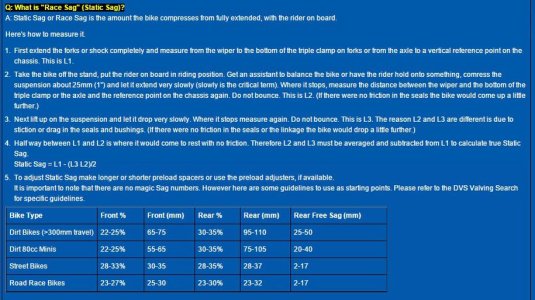I've gone down the route of less race sag on the front, and can only feel the bike becoming more compliant the closer to the 'ideal' 25% (72mm) I get. I definitely agree that you gain some high speed stability ON ROAD. But off road I find it causes juddering at the handle bars and makes the snotty stuff a lot more tiring than it needs to be.
I found similar with tyre pressures in trials, I used to think "I want my front end to be as predictable as can be", so I kept the front tyre pumped nice and high. On solid rocks etc the turning is much easier, BUT, when I finally dropped the pressure to what 'everyone else' uses, everyone thought I'd taken some form of magic pill or something and cleaned most sections!
I suppose it really depends on what you are riding, but as far as I can see, if the pro's recommend 25% front end race sag for MX, how can you want firmer for enduro?

